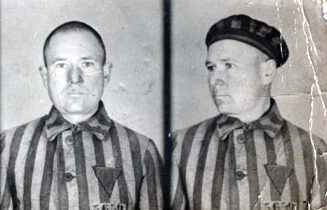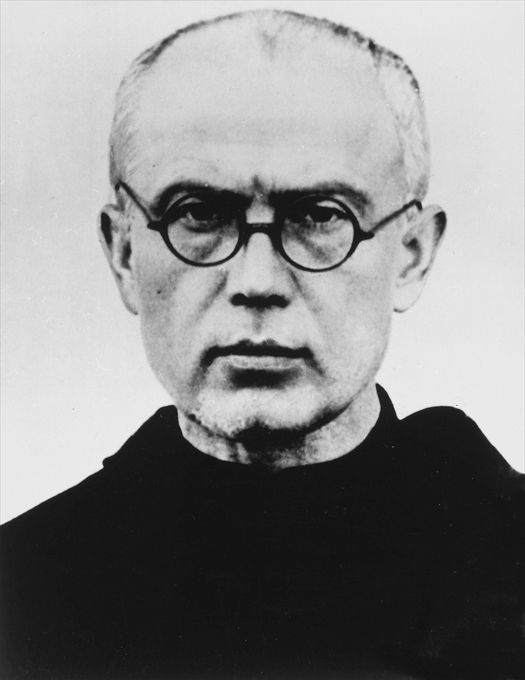80 Years Ago, a Polish Friar Gave His Life for a Family’s Father


Franciszek Gajowniczek in the photographs from the KL Auschwitz camp files, credit. wikimedia (public domain)
“At that time, as I was called by the Camp Commander Fritsch, I uttered the words: ‘I feel sorry for my children and my wife.’ Father Maximilian Kolbe, who was standing next to me, heard these words (…). He spontaneously stepped out of line (…). When the Commander asked him why he wanted to go, he replied that this prisoner had children and a wife.” — This is how Franciszek Gajowniczek, a former prisoner of the German Auschwitz-Birkenau camp who survived thanks to the heroic attitude of St. Maximilian Maria Kolbe, who gave his life for his family’s father, described the events of 80 years ago.
Franciszek Gajowniczek was sent to the German camp in Auschwitz-Birkenau in 1940.
Francis first met Father Maximilian Kolbe in the summer of 1941. This is how he remembered him in an account dated 30 March 1971, written in Brzeg on the Oder River, and stored in the Archives at Niepokalanów (source of all the quotes): “Fr. Maximilian was known. The prisoners knew that he was Father Maximilian. In his free time, he prayed in the block and the prisoners also prayed with him. After evening roll call and black out, he heard the prisoners’ confessions and gave them absolution, as well as keeping their spirits up, comforting them, and encouraging them to endure the harsh conditions in the camp.
A prisoner escaped from block 14 in early August 1941. As a result of this incident, the Germans selected 10 people to be shot. Gajowniczek was among them. This is how he remembers that day, 29 July 1941: ““At that time, as I was called by the Camp Commander Fritsch, I uttered the words: ‘I feel sorry for my children and my wife.’ Father Maximilian Kolbe, who was standing next to me, heard these words, and when we were about to be led to the bunker in block 11 to die of starvation, he spontaneously stepped out of line and went over to Commander Fritsch and stood before him. When he was asked what he wanted, he replied that he wanted to go in the place of one of the chosen. When he was asked why he wanted to go, he replied that this prisoner had children and a wife. When he was asked – who are you – Fr. Maximilian Kolbe replied that he was a Catholic priest. When he was asked which one you wanted to replace, he replied: ‘this one’ and indicated at me with his hand and said that he had a family and I was single. Commander Fritsch agreed to the exchange. He ordered him to step forward in my place, and told me to return to the ranks of the block.”

Father Kolbe (1939), credit_wikimedia (public domain)
“At first, because I was so stunned, I did not realize that someone had gone voluntarily to his death for me, and I would live. This was the great sacrifice of Fr. Maximilian Kolbe that could only have been compared with those in the first centuries of Christianity. There are moments when it is difficult for me to think about this event,” Gajowniczek summarized the account of that day.
Fr. Kolbe died on 14 August 1941, killed by a phenol injection. Fr. Robert M. Stachowiak, OFM Conv, editor of I Saw an Extraordinary Man, a book devoted to the testimony of Auschwitz-Birkenau prisoners regarding St. Maximilian, recalled their opinion of Fr. Kolbe’s martyrdom: “St. Maximilian died for the families of the prisoners of Auschwitz – this is what the prisoners claim in their testimonies.”
On 17 October 1971, Father Kolbe was beatified by Pope Paul VI, and on 10 October 1982 he was canonized by Pope John Paul II. He is remembered in the liturgy on August 14th, the eve of the solemnity of the Assumption of the Blessed Virgin Mary, whom he greatly venerated. He is known primarily as the founder of Niepokalanów, a missionary in Japan, a pioneer of the modern Catholic media, and a great advocate of the Miraculous Medal of Our Lady.



Dodaj komentarz